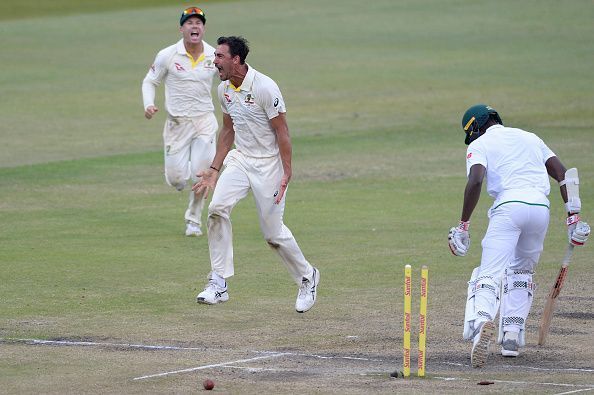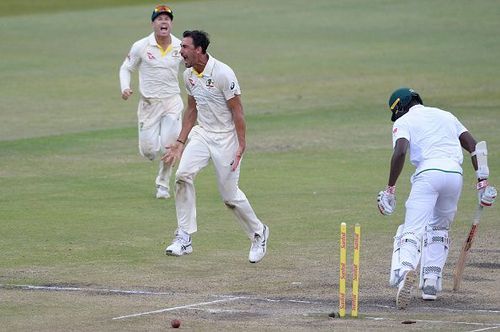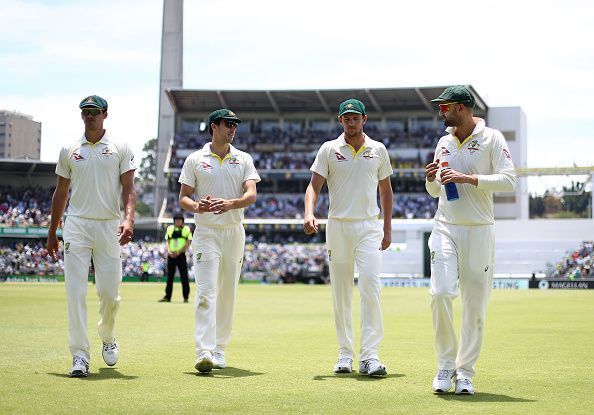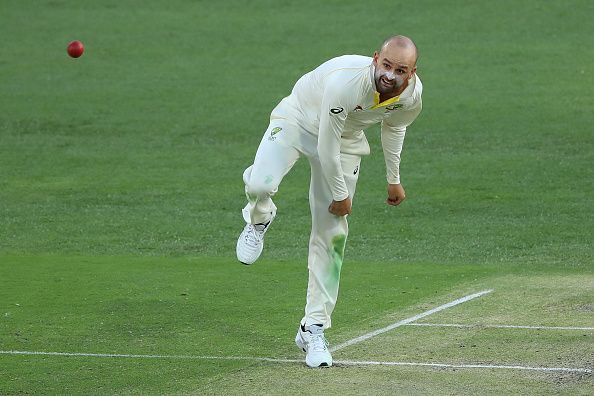
South Africa vs Australia 2018: Why Australia’s bowling attack is the best in business

Taking 20 wickets is paramount to win a Test match and the current Australian bowling attack is capable of achieving the feat almost every time they take the field. After drubbing their old enemies England 4-0 in the recently concluded Ashes series Down Under, Australia have started the 4-match series against South Africa away from home with a thumping 118-run win at Durban.
Even though the Australian batsmen chipped in with crucial runs in both the innings, it was their bowling attack that made all the difference on a dry and unresponsive wicket. So, what makes the Australian bowling tick, and why it is going to be a challenge for South Africa’s batsmen right through the series.
Variety in their attack
The current Australian bowling unit enjoys a very good combination of aggressive and defensive bowlers. One tall left-arm quick, two right-arm fast bowlers, but both are quite different in terms of hitting their natural lengths and the angles from which they deliver. To go with three world-class pacemen, Australia's attack boasts of a finger spinner who's currently the best in world cricket.

Mitchell Starc swings the new ball and is often looking for wickets even at the cost of giving few runs while Hazlewood gives Smith the "control" from the other end. Once the ball gets a little softer, Pat Cummins with his extra pace becomes the aggressive option. Cummins's natural length of hitting the deck hard makes him quite different from his fast bowling mates and also has the tendency to surprise batsmen with pace and extra bounce even on sluggish surfaces.
Nathan Lyon, who was a curator at the SCG a few years back, has now become one of the finest spinners the country has ever produced. Among various strengths, Lyon's self-confidence has grown leaps and bounds in the last couple of years and the record shows for itself when he finished as the leading wicket-taker in 2017.
With Starc bowling from both over and round the wicket, Lyon is more than happy to use the "rough" created by the left-armer and more often than not, troubles the right-handed batsmen by pitching outside off-stump and allows the wicket to do the rest.
Starc gets wickets with the new ball, Hazlewood, Cummins and Lyon control the middle period, while the tall left-arm quick comes back once again, in the end, to mop up the tail.
At present, Starc has to be the best bowler against lower order batsmen especially if the ball starts to reverse swing. The four bowlers from New South Wales hunt together as a pack and are very clear about their roles in the team.
Bowlers for all conditions
When India toured the Rainbow Nation, the home side were very clear as to what kind of wickets they would produce for Test matches - one with seam and bounce. In the current series against Australia, the curators have decided to remove all the grass considering the potent pace attack. The home side prepared a brownish looking wicket at Durban in order to make life difficult for the likes of Starc and co.
But the risk with dry and abrasive wickets are that the ball will start to "reverse swing" very early in the match and also "invariable bounce" becomes a factor as the Test progresses into days 4 and 5. Starc made use of the old ball magnificently and in both the innings, South Africa's tail was just washed away.

Lyon's bowling speed showed how the off-spinner assesses situations quickly. During South Africa's 1st innings (day 2), when the wicket was flat, Lyon's trajectory was much flatter and quicker through the air when compared to the home side's spinner Keshav Maharaj and by doing that, he got the ball to grip off the surface which was evident when he induced bat-pad off Hashim Amla.
Unless South African batsmen come up with clear batting plans against this bowling attack, Australia's terrific record of not getting beaten in a Test series in the Rainbow nation since their readmission will continue for some more time.